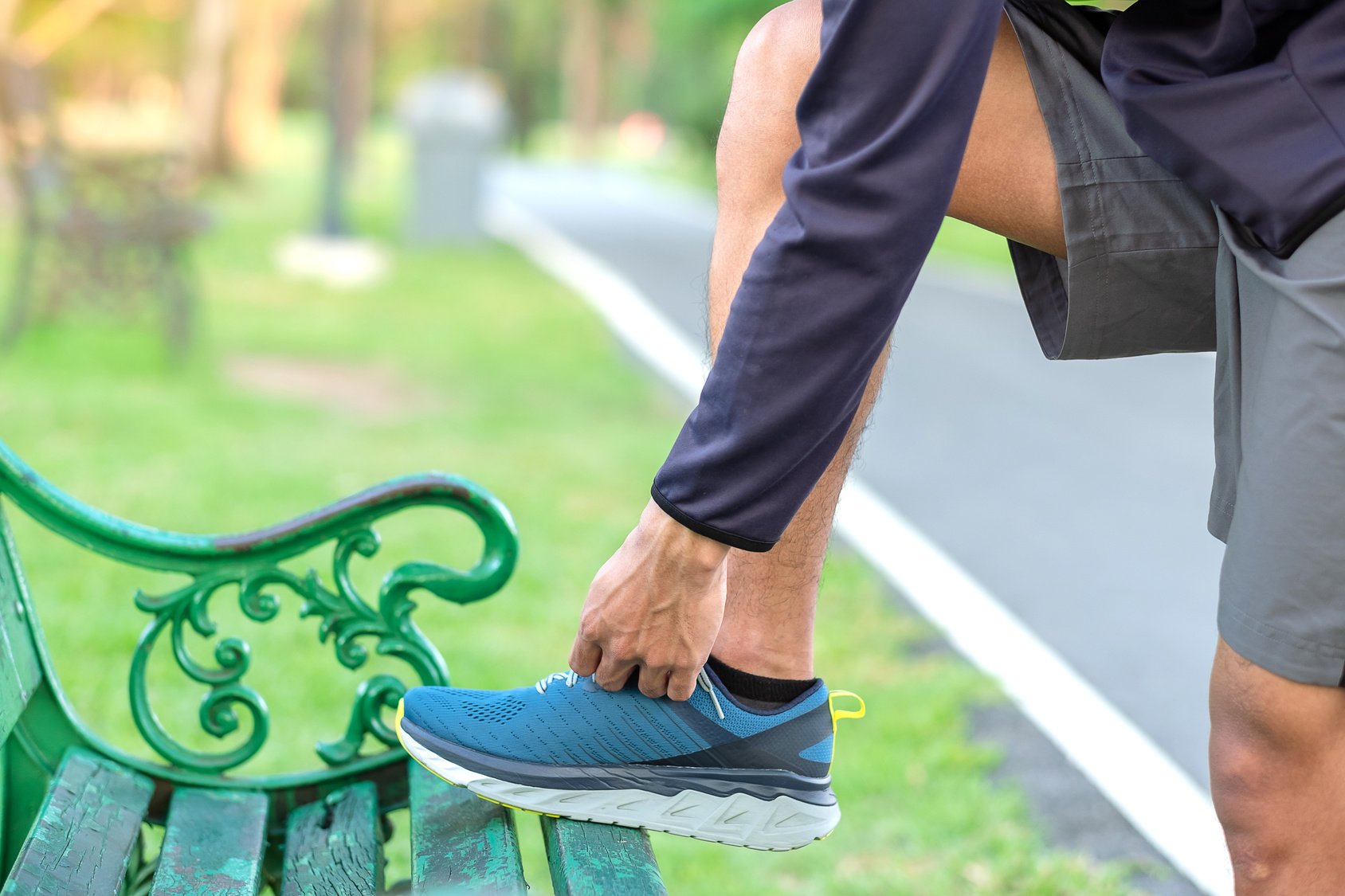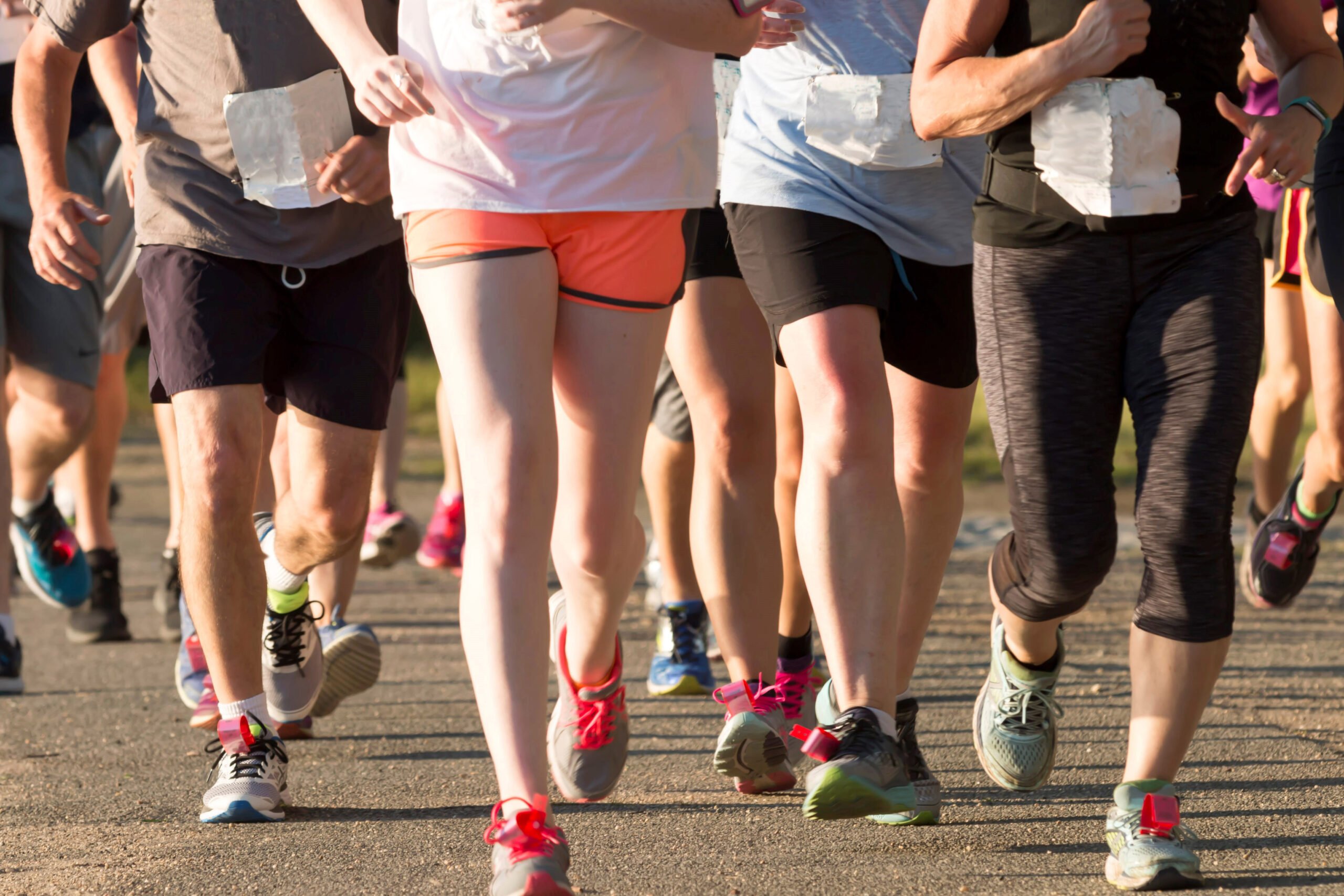If you’re after some solid core exercises to boost your running, I’ve got over 25 go-to moves that’ll do just that!
But before I do that, let me clear something up.
It goes without saying—the best way to get better at running is to, well, run more.
The rule of training specificity still applies—you practice what you want to improve.
There’s no way around that.
But that doesn’t mean other types of workouts aren’t valuable for your training.
The right kind of cross-training makes a huge difference, keeping you fit and injury-free.
The funny thing? Most runners know this but tend to skip it anyway—and that’s where problems can start.
For me, adding in core work has been a game-changer. It’s made all the difference in keeping me balanced and strong.
The core muscles are crucial, even if they often get overlooked in running programs.
So today, I’m sharing my top core exercises for runners—these are moves that’ve actually made a difference in my run
What Exactly Is The Core?
So, what exactly do we mean by ‘core’? Let’s break it down.
Your core isn’t just about abs or a six-pack—it’s actually a whole network of muscles that work together to keep you stable and powerful.
The core includes the whole series of muscles connecting the pelvis, spine, and trunk and the rest of the body. Stretching from the diaphragm and pelvis to the hips and back, these interconnected core muscles provide stability, strength, and power to your upper and lower body.
More specifically, the core involves five main areas:
- Transverse abdominis—internal core muscles that wrap around your spine and sides.
- Erector spinae—your lower back muscles.
- Obliques—both the external and internal muscles on the sides of your abdomen.
- Rectus abdominis—what most people assume when they hear “abs.”
- Other muscles include the glutes, scapula, flexors, and pelvic floor.
The Benefits of Core Exercises for Runners
So, why should runners care about core strength?
It’s simple: a strong core can make you a faster, more efficient runner and reduce your risk of injury.
Here are some key benefits:
- Improved Running Posture: A strong core keeps you from slouching and helps you hold your posture so you’re not hunched over or risking back pain.
- Increased Power: Your core is what transfers power from your upper to lower body, adding some serious oomph to every step. A stronger core means more power behind each stride.
- Better Balance and Stability: I’ve found that when I neglect proper core work, I get sloppy with my form. You might start under-striding or over-striding without realizing it. A strong core helps you stay balanced, especially when your legs start to tire on long runs or intervals.
- Reduced Injury Risk: Strengthening your core can prevent common running injuries, such as lower back pain, IT band syndrome, and even knee pain, by promoting proper form and reducing joint stress.
- Keeps You Going Strong: In the last few miles of a race or a long run, it’s easy to lose form. When your core’s solid, it helps you keep your form and push through even when your legs are begging you to stop.
- Faster Recovery: A strong core even speeds up recovery after tough runs by improving circulation and keeping things balanced.

The 25 Best Core Exercises for Runners
Ready to get to work? I’ve put together 25 of my favorite core exercises that’ll target every part of your midsection.
These exercises range from beginner-friendly moves to more advanced variations, ensuring you can adapt them as you progress. You can perform these exercises anywhere—no gym is required!
Planks
I love planks.
This tough isometric exercise hits every angle of the core.
It also works on spinal stability, vital for efficient and pain-free running.
Proper Form
Lie on your stomach and prop yourself onto your toes and elbows with your feet slightly apart.
Your toes should be about hip distance apart, with your elbows resting on the ground in a straight line under your shoulders.
Now lift and straighten your body to form a straight line from your head to your heel. Keep your core muscles engaged throughout the exercise.
Gaze at the floor while keeping your head relaxed and stress-free.
Hold the plank position for 45 seconds.
For more of a challenge:
Hold the position for a full minute or more as you get stronger.
Additional Reading – Does running give you abs?
Side Planks
This plank variation strengthens the obliques while building endurance throughout the core.
Just make sure you engage your obliques the entire time.
No cheating allowed!
Proper Form
Lie on your side, supporting your upper body on your lower forearm while holding your top arm at your side or up in the air.
Your feet should stack on top of each other.
While lifting your body, keep a straight diagonal line from your head to your feet.
Hold the position for 30 seconds to one full minute, then switch sides.
Balance Plank
An advanced plank variation that builds strength and endurance throughout the body.
Proper Form
Assume a plank position.
While keeping a straight line from your head to toe, hold the position, making sure your lower back, glutes, and abs are all engaged.
While holding the position, extend your left arm in front of you, return to position and then extend your right arm.
Then return to position and lift your right Leg off of the ground behind you, return to position and repeat with the left Leg.
Hold each new position for 3 to 5 seconds, and repeat the cycle for 45 seconds.
For even more of a challenge: Hold each position longer, or do crunches in a plank position by bringing your left elbow down to meet your right knee while lifting the knee, then switch sides.
Russian Twists
Russian twists are some of the best exercises for firing up side muscles.
Proper Form
Have a 5- to 15-pound medicine ball or weight next to you.
Sit on the floor with your knees bent and your heels about a foot from your butt
Keeping your back straight, lean back slightly without rounding your spine to a 45-degree angle, and raise your feet off the floor.
Pick up the weight and hold it at chest level, then twist to the right, reaching with the ball as far behind you as possible.
Pause, then rotate to the other side.
Keep alternating sides.
For more of a challenge: Use a heavier medicine ball or dumbbell, or do more reps.
Superman
The Superman exercise targets your lower back muscles, vital for maintaining stability in the hip region.
Proper Form
Lie on your stomach with your arms and legs extended and raise your head off the floor slightly to look like Superman in flight.
While holding this pose, raise your left arm with your right leg roughly 3 to 5 inches off the floor, holding for a 5-second count.
Slowly lower your arm and Leg, and switch sides. Repeat for 45 seconds.
For more of a challenge: Hold the Superman pose longer and do more reps.
Single-Leg Glute Bridge
This excellent core exercise mainly targets the glutes, but other core muscles work hard as well.
Proper Form
Lie on your back with your legs bent at almost 90-degree angle and your feet flat on the floor.
While engaging your core, lift your hips off the ground, so there’s a straight line from your knees to your shoulder.
Extend your right Leg with your toes pointing toward the ceiling.
Hold for a moment, then lower your Leg to the floor and repeat on the other side.
Continue for 45 seconds.
Make sure to use good form throughout the exercise.
No sagging or dipping of the butt is allowed.
For more of a challenge: Flex your legs and reach them as high as you can while solely relying on your glutes to support you the entire time.
Windshield Wipers
Also known as metronomes, this is a powerful core exercise for your obliques.
It’s also key for building rotational core strength, another vital component of good performance.
Proper Form
Begin by lying on your back with your knees bent and raised over your hips and your ankles parallel to the floor.
While engaging your core muscles and keeping your hips in contact with the floor, rotate your legs to the right, hold for a moment, then bring them back up and repeat the movement on the other side.
Aim for at least eight reps on each side.
Avoid swinging too fast and using the momentum of the movement.
For more of a challenge: Flex your toes and keep your Leg straight while doing the exercise, or hold the pose longer on each side.
Scorpion Planks:
This tough move will not only give your core a tough workout but also build strength and mobility in your upper body.
Scorpion planks also help you stretch out your hip flexors and obliques, which are often neglected.
Proper Form
Assume a push-up position with your hands on the floor and the balls of your feet resting on a low chair or a bench.
Keep your back and legs aligned in a straight form.
Lift your left Leg off the bench and cross your knee under your body toward your right shoulder as far as you can, then return it to the bench and do the same with your right knee and left shoulder.
Repeat for 45 seconds
For more of a challenge, add a push-up to the top of every scorpion move you make.
The Boat
A fantastic exercise to strengthen your erector spinae, rectus abdominis, and the hip flexors.
Proper form
Begin by sitting up straight on the floor with your knees bet, feet flat on the floor, and back straight.
Next, hold your arms out in front of you as you slowly lift your feet off the floor while keeping them together until they form a 45-degree angle to your torso.
Active your entire core, balance on your tailbone, and keep your back flat the whole time.
Extend your legs so they’re straight and your body forms a V shape.
Hold the pose for a count of 10, slowly lower your legs, then repeat.
Reach your arms straight in front of you while keeping them parallel to the ground.
For more support, feel free to place your hands on the ground or underneath your hips.
Dead Bug
The dead bug (which looks exactly like it sounds) is an awesome exercise for connecting your mind to your core.
It’s an all-encompassing core move that works your deep inner core, mainly the diaphragm, transverse abdominis, multifidus, and pelvic floor; what’s not to like.
Proper form
Begin by laying on your back with your arms extended toward the ceiling, directly over your shoulders, and legs in a tabletop position (both knees bent 90 degrees and stacked over your hips).
Lower your left arm and right Leg at the same time until they’re hovering just above the ground, then slowly return to starting position.
Keep both knees hovering a few inches from the floor.
Engage your core and squeeze your body throughout the exercise, lower back pressed into the floor.
Slowly extend your left leg straight while dropping your right arm overhead at the same time.
Kneeling Extension
Another great move that keeps your core muscles strong, as well as helps prevent lower back pain.
Proper Form
Begin by kneeling on all fours, with your hands beneath your shoulders and knees directly under your hips.
Activate your core muscles and slowly raise your left arm and extend it straight forward.
Slowly lift your right Leg and extend it straight back, and point your toes down.
Hold the pose for a count of ten and slowly lower to starting position, and switch sides.
Repeat five times on each side.
Bicycle Crunches
Regular crunches are too boring.
Spice them up with bicycle crunches.
It’s beginner-friendly, and can be done anywhere, but it’s also challenging.
This is one of the best core exercises you can do—and one of my favorites—targeting not only the usual abs but also the obliques and deep abs.
Proper Form
Lie flat on the ground, with your lower back pressed flat into the ground, knees bent, and head and shoulders raised slightly above it.
Next, place your hands lightly behind your head, then bring your knees toward your chest and raise your shoulder blade off the floor, but be sure not to pull on the back of your neck.
Bring one knee up towards your armpit while straightening the other Leg, keeping both elevated higher than your hips.
Rotate your torso as much as possible so you can touch your elbow to the opposite knee as it comes up.
As you perform the movement, twist through your core as the opposite arm comes towards the elevated knee.
Focus on moving through your core as you turn your torso.
Don’t feel like you have to touch the elbow to knee, but it’s a worthy goal to have.
Additional resource – Guide to running lingo
Scissors kick
Begin by laying on your back, knees bent, feet on the floor, and hands underneath the lower back for support.
Next, lift your left leg one inch off the ground while extending the right Leg to the ceiling, then kick the legs, toes pointed. Keep alternating back and forth so that it looks like a scissor motion.
Engage your abs throughout the exercise.
Aim for eight reps on each side to complete one set.
Start by kneeling on the floor, on all fours, hips lined over the knee, hands directly under the shoulders, and back parallel to the floor.
Next, lift your right leg until your hamstrings are in line with your back, pause, and then slowly lower your Leg back to starting position, then switch sides to complete one rep.
Continue alternating between legs.
The Bridge
Lay flat on the ground with hands on the side and knees bent. Next, raise your hips off the ground by pushing with the heels.
Next, squeeze your glutes for a moment as hard as possible to keep the hips up.
Then take three to five seconds to slowly lower back to the ground to complete one rep.
Mountain climbers
Assume a push-up position, so your hands are directly under your chest at shoulder-width apart with straight arms.
Next, while holding the upper body steady, raise your right foot off the ground, bring the knee as close to the chest as possible, then repeat with the left Leg.
Continue alternating right knee, then left knee to the chest, as fast as possible while keeping good form.
Aim for 16 to 20 reps to complete one set.
Swiss-ball Roll-out
Begin by kneeling on a mat or the floor, elbows bent under the shoulders and resting tightly on a stability ball and core engaged.
To perform the Swiss ball roll-outs, roll the ball forward on the elbows as far as possible, then slowly roll back to starting position while keeping the back straight the entire time.
That’s one repetition.
Do three sets of 15 reps each.
Cross-climber with Feet on a Swiss Ball
Assume a standard push-up position, arms straight, shins resting firmly on a Swiss ball.
Be sure that your body is forming a straight line from the head to the ankles.
Next, while bracing the core and keeping the back straight, raise the right Leg off the ball and bring the right toward the left elbow, hold it for a moment, then move the right Leg to start position, and repeat on the other side, left knee to right elbow this time.
That’s one rep.
Do 12 reps to complete one set.
Aim for three sets.
Medicine Ball V-up
Hold a med ball, and lie on your back with legs straight and arms directly above the head.
That’s the starting position.
Next, while keeping the elbows straight the entire time, lift your torso and legs as you bring the ball toward your feet, pause for a count of three, then slowly lower back to starting position.
That’s one rep.
Do three sets of 12 to 15 reps each.
Spider-man Plank Crunch
Begin in a classic plank position with your forearms on the mat and body straight from head to ankles.
Next, raise your right Leg, and bring your right knee in towards the right elbow, hold it for a moment, then move your Leg back to plank position and switch sides.
Make sure to engage your core and keep your body steady and straight throughout the movement.
Keep alternating sides for a total of 16 reps to complete one set.
Aim for three sets.
Double Mountain Climber
Get into a push-up position with hands a bit wider than the shoulders.
Next, jump both of your feet up towards the hands, with the knees coming just outside of the elbows, pause for a second, then push back to starting position in one continuous and explosive motion.
Do at least 25 reps on each side to complete one set.
Aim for three sets.
Jump Squats
Assume an athletic position and stand as tall as you can with the feet spread shoulder-width apart.
Next, while keeping your back straight and head up, squat down until the knees are bent at roughly 90 degrees; then, as soon as you reach the bottom part of the squat, jump up explosive in the air by mainly pressing with the balls of your feet, using the thighs like springs.
Move into the next rep as soon as you land on the floor.
Do 12 to 16 reps to complete one set.
Aim for three sets.
Plank with Alternating arm and Leg Raise
Assume a standard push-up position with both arms straight, fingers pointed forward, and core activated.
Next, raise your right arm and left Leg, then extend and straighten them both until they are parallel to the floor, hold it for a count of three, then repeat to starting positing and switches sides.
Do eight reps on each side to complete one set.
Shoot for three sets.
Join the Conversation: Share Your Core Tips!
A strong core can make all the difference in your running, and every runner has their favorite exercises for building that strength. I’d love to hear from you!
Whether it’s planks, Russian twists, bird dogs, or something unique, jump into the comments below and let us know which core exercises have made a difference for you.
Your go-to moves, tips, and insights could inspire other runners to take their training to the next level!






















